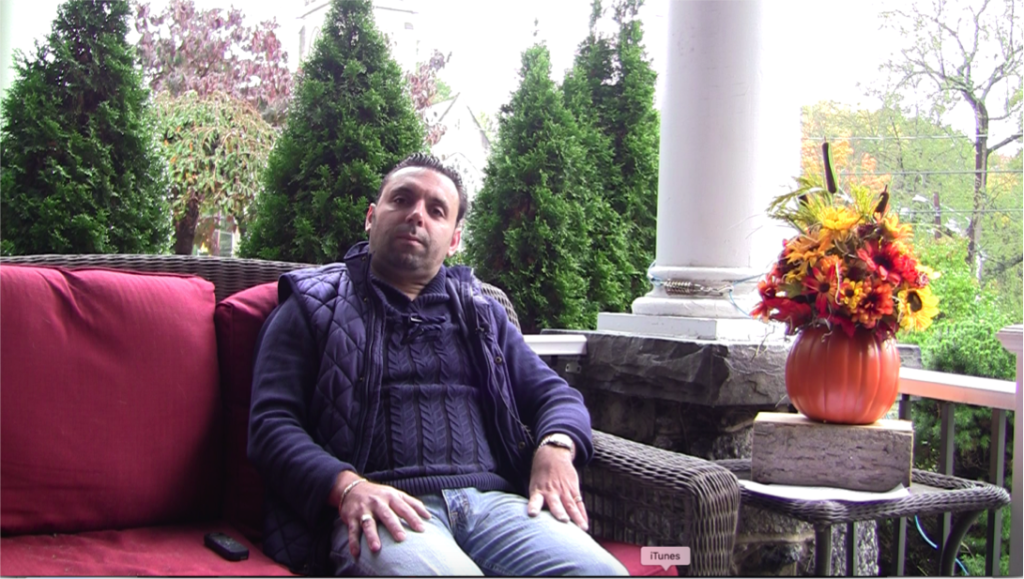Over the last three years, Scranton’s government has been finding creative ways to increase local taxes to cover its liabilities, accountants say. Scranton has the third highest Earned Income Tax rate in Pennsylvania, behind Philadelphia and Reading, according to the Federal & State Tax Information Portal. Scranton is the only small city in Pennsylvania that has a privilege mercantile tax, which is based on gross receipts of a business. In addition, according to local real estate brokers, high property taxes have become the main reason for residents to sell their homes and leave Scranton.
Stacey, who did not provide her last name, has lived in Scranton for about 40 years, said that almost all of her extended family has moved out from Scranton because of the high taxes. ‘‘We have a high property and high school tax,” she said at a Halloween dance show. “We have a lot of elderly in this area who are unfortunately selling their homes because they can no longer afford them. I want to see my kids grow up here…It’s hard.”

Stacey has three children and takes care of her elderly mom. Her husband works two jobs to provide for his family, and pays taxes totaling about $3,000 a year. ‘‘That’s just our property tax alone,” she said. “Our school tax is about $850 a year on top of that, so that’s almost $4,000 alone for my family.’’
In the mid-1930s, Scranton’s population was about 140,000, due to a robust economy driven by mining and silk textile industries. By 2017, the number of residents had shrunk by almost half, to 77,605, according to the United States Census Bureau.
Currently, real estate taxes account for 36 percent of local revenues and is a major source of income for the city. However, realtors say that high taxes are hurting the real estate market in Scranton.‘‘Nobody wants to buy homes here,’’ said Adam Guiffrida, the owner of Dinamico Corporation, a real estate company based in Scranton.
As a result, about 50 percent of the people living in Scranton are renters. According to the United States Census Bureau, the percentage of renters in Scranton is 49 percent, which is 12 percentage points higher than the national average of 37 percent.
In an effort to make up for some of the lost income, Scranton almost doubled its waste collection fees over the past year, said Guiffrida.

Adam Guiffrida, the owner of Dinamico Corporation,areal estate company based in Scranton, is suing the city for overtaxing.
*Guiffrida is currently suing the city over waste removal fees, and the annual rate the city charges landlords for each rental property. Eight other plaintiffs have accused the city of violating Act 511, which limits the amount of taxes that can be collected in a fiscal year.
Defendants named on the suit include the City of Scranton, Mayor Bill Courtright, and the city’s business administrator David Bulzoni. They have argued that the city is not a subject to ‘‘any limitation on rates of taxation imposed on residents.”
‘‘They claim they are not subject to act 511 because they are a home rule charter city,” said John McGovern, the plaintiffs’ lawyer. “The court already ruled against them twice on that defense.’’
On September 20, Judge James Gibbons ruled that the city must certify its tax collections by mid-December.
Gary St Fleur, a plaintiff, said that the suit may cost the city $50 million, and if decided in their favor, taxpayers would be allowed to receive a refund for any taxes paid in excess of the cap for the past three years. In this scenario, the city could go bankrupt, since its total revenue won’t be enough to cover the costs, he said.
According to Scranton’s audited financial statements of 2016, Scranton had $346 million in total assets versus $481 million in liabilities, thus creating a $135 million shortfall. The city’s total debt increased by $32 million during the fiscal year that ended on December 31, 2016.
‘‘They sold major assets, such as the Scranton sewer authority, and there are no more assets to be sold,’’ said Jim Mulligan, the owner of the Scranton’s Mulligan Law firm. He blames the local government for mismanagement and reckless spending.
‘‘A simple reason for higher taxes is because the inflows of revenue are not enough to support the cash outflows,’’ said Geoffrey Mesko, a certified public accountant CPA, and a shareholder Drucker & Scaccetti, an accounting firm based in Scranton
Along with the property taxes, the local government has also increased income taxes. Scranton has a 3.4 percent Earned Income Tax (EIT) for individuals and businesses, compared to 1 percent for other small cities in Pennsylvania. For business taxpayers, there is also a business privilege mercantile tax (‘BPMT’), and the tax rate differs depending on the type of business the owners operate. Scranton has the third highest BPMT tax rate, behind Philadelphia and Reading.
‘‘Even if you lose money, you still have to pay the tax,’’ said Mulligan, who moved his law firm to Moosic, a borough in Lackawanna County that that doesn’t have BPMT. ‘‘This is the result of decades of pure politics, and that’s why there’s no economic development in the city.”
‘‘It is a major, major burden on businesses,” said Guiffrida. “From small contractors to bigger companies… everybody is moving out of the city. We are losing companies, we are losing jobs very quickly, and it’s very scary.’’
‘‘Now is the time for the city to show it can bring some additional revenue without putting a burden on its taxpayers,’’ he said.
*Editor’s note: The story originally said that Guiffrida was suing the city for overtaxing. We regret the error.
Email the Author, Natalia Knaizhevich atnk2553@nyu.edu